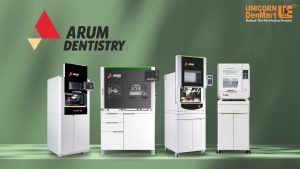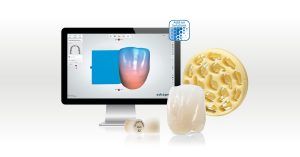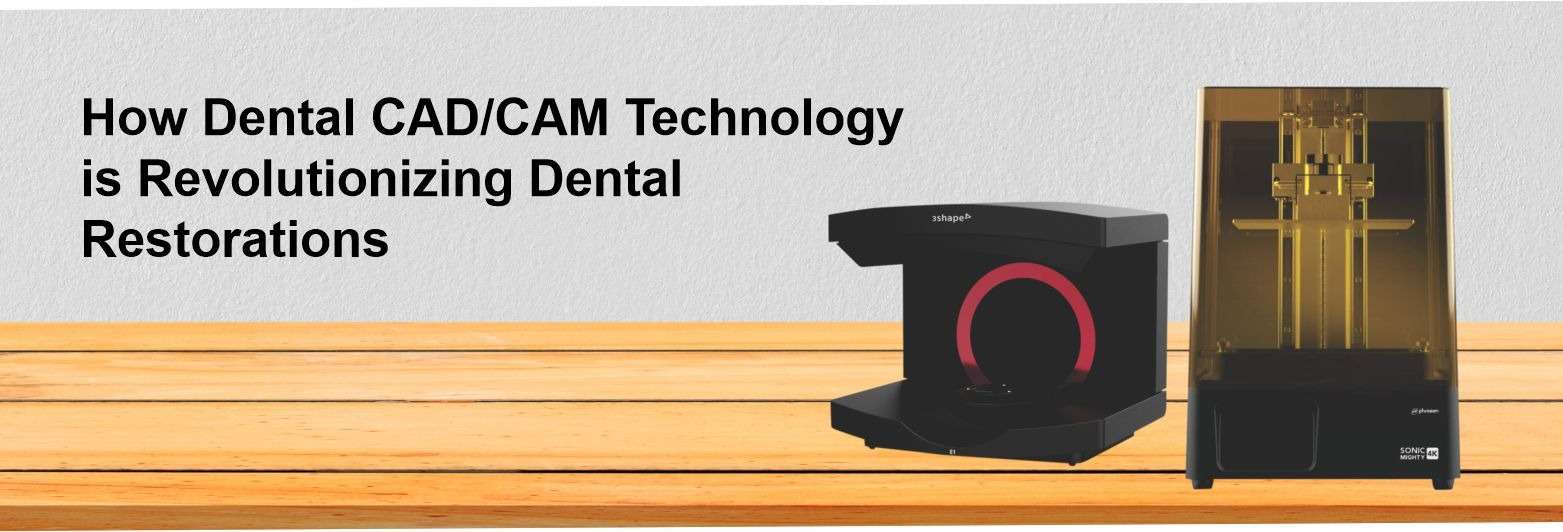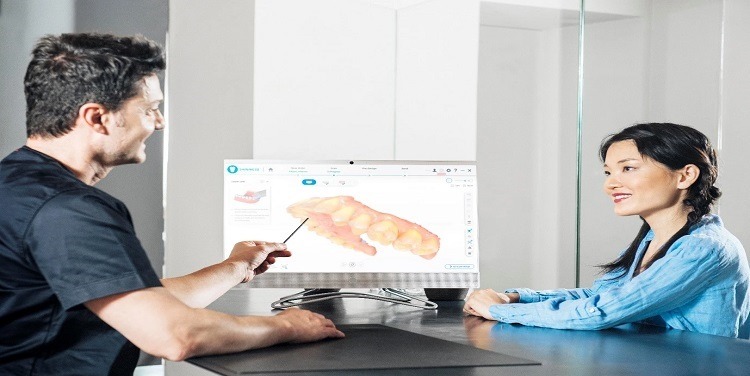Dental Milling Machines: The Future of In-House Restorations
The Evolution of Dental Restoration Methods
The journey of dental restorations has been marked by significant advancements, transitioning from time-consuming and often inconvenient processes to more efficient, patient-friendly methods. The introduction of dental milling machines represents a pivotal moment in this evolution. These machines have revolutionized the way dental restorations are created, offering a seamless blend of speed, precision, and convenience.
Dental milling machines have become synonymous with modern digital dentistry. By leveraging CAD/CAM technology, these machines enable dentists to fabricate dental prosthetics, like crowns and bridges, directly in their clinics. This shift not only streamlines the restoration process but also significantly enhances the level of personalized care that can be provided to patients.
The Impact on Patient Care and Dental Practices
Integrating dental milling machines into dental practices marks more than just a technological advancement; it signifies a fundamental change in dental care delivery. This change is centered around increased efficiency, reduced reliance on external dental labs, and improved patient satisfaction. As dental practices adopt these machines, they are able to offer quicker, more accurate, and customized dental solutions.
Looking Ahead: The Future of Dental Milling
As we delve deeper into the capabilities and potential of dental milling machines, it becomes increasingly clear that they are not just a modern convenience but a cornerstone of future dental care. This blog aims to explore the various aspects of dental milling machines, highlighting their role in the ongoing transformation of dental restorations and patient care.
Understanding Dental Milling Machines

Introduction to Dental Milling Machines
Dental milling machines have become a vital component in the landscape of modern dentistry. These advanced devices utilize state-of-the-art CAD/CAM technology to accurately and efficiently fabricate a variety of dental restorations, such as crowns, bridges, and veneers. The ability to work with diverse materials, including ceramics, zirconia, and composite resin, makes these machines indispensable for contemporary dental practices.
The Role of Dental Milling Machines in Dentistry
Dental milling machines are celebrated for their precision and ability to produce highly customized dental restorations. This precision is crucial not only for the aesthetic appeal of the restorations but also for their functional alignment within a patient’s mouth. Additionally, these machines bring a new level of efficiency to dental practices, significantly reducing the time needed to create dental prosthetics. This efficiency translates to quicker treatment times and fewer visits for patients.
Technological Advancements in Dental Milling
The evolution of dental milling technology has been remarkable. From basic models to highly sophisticated machines, these advancements have expanded the capabilities of dental practices in creating detailed and durable dental restorations. Furthermore, dental milling machines integrate smoothly with other digital dentistry tools, creating a cohesive and streamlined workflow.
Benefits for Dental Practices and Patients
The introduction of dental milling machines into dental practices has multiple benefits. For dental professionals, it reduces the reliance on external dental labs and gives them greater control over the restoration process. For patients, it means experiencing shorter waiting times, fewer appointments, and restorations that are more accurately tailored to their individual dental needs.
The Rise of CAD/CAM Technology in Dentistry

Overview of CAD/CAM Technology
The integration of CAD/CAM (Computer-Aided Design and Computer-Aided Manufacturing) technology in dentistry has been a game-changer. It allows for the digital design and fabrication of dental restorations, offering a level of precision and efficiency previously unattainable. This technology has revolutionized many aspects of dental care, particularly in the realm of prosthetic dentistry.
CAD/CAM’s Integration with Dental Milling Machines
The synergy between CAD/CAM systems and dental milling machines is a cornerstone of modern dental practice. This combination empowers dentists to design and create precise dental restorations in-house. By digitally scanning a patient’s mouth, designing the restoration using specialized software, and then using a milling machine to fabricate the restoration, the entire process becomes more streamlined and accurate.
Advancements and Benefits
CAD/CAM technology has made significant strides in recent years, enhancing not only the quality of dental restorations but also the overall patient experience. Some of the key advancements include:
– Improved Precision: The accuracy of CAD/CAM systems ensures that each restoration fits perfectly, reducing the need for adjustments and remakes.
– Efficiency Gains: The technology significantly cuts down on the time needed for creating restorations, translating into fewer dental visits and quicker results for patients.
– Customization: Each restoration can be tailored to match the patient’s specific dental anatomy and aesthetic preferences, leading to more natural-looking outcomes.
Looking Forward
The future of CAD/CAM in dentistry holds great promise. As the technology continues to evolve, we can expect even more innovative applications and improvements in the field. This will likely include enhanced materials, more user-friendly software, and even tighter integration with other digital dentistry tools, further transforming the landscape of dental care.
Advantages of In-House Dental Restorations
Transition to In-House Fabrication
The shift towards in-house dental restorations, facilitated by the adoption of dental milling machines and CAD/CAM technology, marks a significant transition in dental practice management. This move away from traditional reliance on external dental labs to creating restorations within the dental clinic itself offers a range of benefits, both for dental professionals and their patients.
Benefits for Dental Practices
In-house fabrication of dental restorations presents numerous advantages for dental practices:
– Control and Flexibility: Dentists have more control over the entire restoration process, from design to production, allowing for greater flexibility and customization.
– Reduced Turnaround Time: The ability to produce restorations on-site leads to significantly reduced turnaround times, enabling quicker treatment cycles and increased patient throughput.
– Cost Efficiency: While there’s an initial investment in purchasing and setting up the equipment, in the long run, in-house milling can be more cost-effective than outsourcing to dental labs.
Impact on Patient Experience
The benefits of in-house dental restorations extend to patients as well:
– Faster Treatment: Patients enjoy quicker completion of their dental restoration work, often within a single visit, eliminating the need for multiple appointments.
– Customization and Comfort: In-house milling ensures a higher level of customization for each patient, leading to better fitting and more comfortable restorations.
– Enhanced Trust and Satisfaction: The transparency of the in-house fabrication process can enhance patient trust and satisfaction, as they witness the care and precision put into their dental restorations.
The Broader Implications
The move towards in-house restorations represents a broader trend in dental care towards more integrated, efficient, and patient-centric services. As technology continues to advance, it is likely that more dental practices will embrace in-house milling, further revolutionizing the way dental care is delivered and experienced.
Advanced Dental Equipment: Beyond Milling Machines
Complementing Dental Milling Machines
While dental milling machines are a key component in the modern digital dentistry workflow, they are just one part of a larger ecosystem of advanced dental equipment. This section explores how other state-of-the-art dental tools work in conjunction with milling machines to enhance overall dental treatment.
Other Key Pieces of Advanced Dental Equipment
– Intraoral Scanners: These devices digitally capture a 3D model of a patient’s mouth, eliminating the need for traditional dental impressions. The data collected is essential for designing precise restorations with CAD/CAM software.
– 3D Printers: Used for a variety of dental applications, including the creation of surgical guides, orthodontic appliances, and even certain types of dental restorations.
– Digital Imaging Systems: Advanced imaging technologies, such as CBCT (Cone Beam Computed Tomography), provide detailed views of a patient’s oral structure, aiding in accurate diagnosis and treatment planning.
Integration for Enhanced Treatment
– Seamless Workflow: The integration of these tools with dental milling machines creates a seamless workflow from diagnosis to treatment completion.
– Improved Diagnostic Capabilities: Combined with advanced imaging and scanning technologies, dental milling machines enable dentists to diagnose issues more accurately and plan treatments more effectively.
Impact on Dental Practice and Patient Care
– Elevated Quality of Care: The use of advanced equipment contributes to a higher standard of patient care, with more precise and effective treatments.
– Efficiency and Productivity: These technologies streamline various dental processes, from diagnostic procedures to the fabrication of restorations, enhancing the overall efficiency and productivity of the dental practice.
Precision Dental Prosthetics: Accuracy and Customization
The Critical Role of Precision
Precision in dental prosthetics has always been a cornerstone of successful dental treatments, but never has it been as attainable and crucial as it is today. With the advent of advanced dental milling machines and digital design technologies, the precision of dental prosthetics has reached new heights. This precision is vital not only for the aesthetic appearance of the prosthetics but also for their functional fit and longevity within the patient’s mouth.
Customization: A New Standard in Dentistry
One of the most significant advantages brought about by digital dentistry is the ability to customize dental prosthetics to an unprecedented degree. This customization extends beyond mere sizing; it includes the precise shaping, coloring, and material selection to match the natural teeth of the patient as closely as possible. This level of customization ensures that each prosthetic is unique and tailored to the individual’s specific dental needs.
Innovations Leading to Improved Outcomes
The innovations in digital dentistry, particularly in CAD/CAM technology, have not only streamlined the production process but also enhanced the quality of the final dental products. These advancements mean that dental prosthetics now fit better, last longer, and look more natural than ever before.
Impact on Patient Satisfaction
The direct impact of these technological advancements is seen in increased patient satisfaction. Patients benefit from restorations that are not only more aesthetically pleasing but also offer a better fit, reducing discomfort and potential complications. This level of quality and comfort contributes significantly to the overall patient experience in dental care.
Streamlining the Dental Workflow with Digital Solutions
The Evolution of Dental Workflow Through Digitalization
The integration of digital technology into dental practices has been a major factor in transforming dental workflows. Tools like dental milling machines, CAD/CAM systems, and digital imaging have not only streamlined various dental procedures but also enhanced the precision and efficiency of dental treatments.
Impact on Efficiency and Accuracy
The adoption of digital solutions in dental practices has led to significant improvements in both efficiency and accuracy:
– Time Efficiency: Digital technologies have drastically reduced the time needed for dental restorations, allowing for quicker patient turnover and less chair time.
– Increased Accuracy: The precision of digital tools means fewer errors in treatment, resulting in higher success rates and reduced need for follow-up corrections.
Case Studies of Improved Workflow
Incorporating real-world examples of dental practices that have successfully integrated digital technologies can provide valuable insights. These case studies can highlight the practical benefits and patient feedback on these improved workflows.
Customization of Dental Treatments
One of the most significant benefits of digital dental solutions is the ability to offer highly customized treatments:
– Personalized Care: Digital tools enable dentists to tailor treatments to the unique needs of each patient, improving outcomes and patient satisfaction.
– Adaptable Treatment Options: The versatility of these technologies allows dentists to handle a wider range of dental conditions more effectively.
Customized Dental Solutions for Patients
The Shift Towards Personalization in Dentistry
The trend in modern dentistry is shifting towards more personalized care, where treatments are tailored to meet the individual needs and preferences of each patient. This shift is largely driven by advancements in dental technology, particularly the use of dental milling machines and digital design tools.
Benefits of Customization for Patients
– Enhanced Fit and Comfort: Customized dental solutions offer a better fit and increased comfort, as they are specifically designed to match the patient’s unique dental structure.
– Aesthetic Improvements: Personalized restorations can be designed to match the color, shape, and size of a patient’s natural teeth, leading to more aesthetically pleasing outcomes.
– Improved Dental Health: Customized solutions not only improve the appearance of a patient’s smile but also contribute to better overall dental health by ensuring proper alignment and functionality.
The Role of Digital Dentistry in Customization
– Precision and Detail: Digital tools, such as CAD/CAM software and 3D imaging, provide dentists with the ability to create highly detailed and precise dental restorations.
– Quick Adaptation to Changes: Digital solutions allow for quick adjustments and modifications, ensuring that the final product is exactly as needed for the patient.
Patient Involvement in the Treatment Process
– Increased Engagement: The ability to visualize and understand the proposed dental solutions can increase patient engagement and satisfaction with the treatment process.
– Informed Decisions: Digital technologies enable patients to be more involved in their treatment planning, allowing them to make informed decisions about their dental care.
The Future of Patient-Centric Dentistry
– Continued Advancements: As technology continues to advance, we can expect even more sophisticated customization options in dental care.
– Greater Patient Satisfaction: The focus on personalized dental solutions is likely to lead to higher levels of patient satisfaction and better overall dental outcomes.
Dental Lab Technology: Then and Now
Historical Perspective on Dental Lab Technology
Dental lab technology has come a long way from its traditional roots. Historically, dental labs were solely responsible for fabricating dental restorations, a process that often involved manual craftsmanship and was time-consuming.
Evolution of Dental Lab Technologies
– From Manual to Digital: The transition from manual methods to digital technologies has been transformative, with CAD/CAM systems and milling machines leading the charge.
– Increased Efficiency and Precision: The shift to digital technology has enabled labs to produce restorations more efficiently and with greater precision.
Current Trends in Dental Lab Technology
– Collaboration with Dental Practices: Modern dental labs often collaborate closely with dental practices, especially those that have adopted in-house milling capabilities.
– Specialization in Complex Cases: While simple restorations are increasingly handled in-house, dental labs often specialize in more complex and demanding cases that require advanced skills and technologies.
The Role of Dental Labs in Modern Dentistry
– Supporting Dental Practices: Dental labs continue to play a critical role by providing support for dental practices, particularly in complex restorative cases.
– Innovation and Advancement: Dental labs are often at the forefront of adopting new materials and techniques, continually pushing the boundaries of what is possible in dental restoration.
The Future of Dental Lab Technology
– Continued Evolution: The field of dental lab technology is expected to continue evolving, with ongoing advancements in materials and digital fabrication methods.
– Partnership with Dental Practices: The future likely holds a more integrated partnership between dental labs and practices, leveraging the strengths of both for optimal patient care.
The Future of Dental Fabrication
Emerging Trends in Dental Fabrication
The field of dental fabrication is on the cusp of significant changes, driven by technological advancements and evolving industry demands. These emerging trends are shaping the future of how dental restorations are designed and created.
Advancements in Dental Milling Technology
– Innovations in Milling Machines: Future developments in dental milling technology are expected to bring even greater precision, speed, and material versatility.
– Integration with Other Technologies: The integration of milling machines with emerging technologies like artificial intelligence and advanced imaging techniques promises to further enhance their capabilities.
Material Science and Dental Restorations
– New Materials: Research and development in material science are continuously yielding new materials for dental restorations, offering improved durability, aesthetics, and biocompatibility.
– Customized Material Properties: Future advancements may allow for the customization of material properties to match individual patient needs more closely.
Digitalization and Personalization in Dentistry
– Expanding Digitalization: The trend towards complete digitalization in dentistry is likely to continue, with digital workflows becoming even more streamlined and interconnected.
– Enhanced Personalization: As technologies evolve, the ability to personalize dental restorations to the minutest detail will likely become the norm, ensuring optimal fit and patient satisfaction.
Implications for Dental Practices and Patients
– Changing Dynamics in Dental Practices: Dental practices will need to adapt to these advancements, potentially reshaping their workflows and patient care strategies.
– Improved Patient Outcomes: Ultimately, these advancements are expected to lead to better patient outcomes, with more efficient, accurate, and personalized dental care.
Conclusion: Embracing the Future of Dental Restoration Technology
Reflecting on the Evolution of Dental Restorations
This blog has taken us through a journey, exploring the significant advancements in dental restoration technology, particularly focusing on the role of dental milling machines. From the historical reliance on external dental labs to the current trend of in-house fabrication, the landscape of dental prosthetics has undergone a remarkable transformation.
The Central Role of Dental Milling Machines
Dental milling machines, backed by CAD/CAM technology and digital dentistry innovations, have emerged as pivotal in this transformation. They have redefined what is possible in terms of precision, efficiency, and customization in dental restorations, benefiting both dental professionals and patients alike.
Looking Towards a Technologically Advanced Future
As we look to the future, it’s clear that the field of dental restoration will continue to evolve. The ongoing advancements in dental milling technology, material science, and digital workflows promise to further enhance the capabilities of dental practices. This evolution is not just about technological advancement but also about improving patient care and satisfaction.
The Importance of Staying Informed and Adapted
For dental professionals, staying abreast of these advancements and adapting their practices to incorporate these technologies will be crucial. Embracing these changes will not only enhance the quality of dental care provided but also ensure that their practices remain at the forefront of the dental industry.
Final Thoughts
The future of in-house dental restorations is bright, filled with opportunities for enhanced patient care and more efficient dental practice operations. As we embrace these innovations, the field of dentistry is set to reach new heights of excellence and patient satisfaction.





Leave a comment